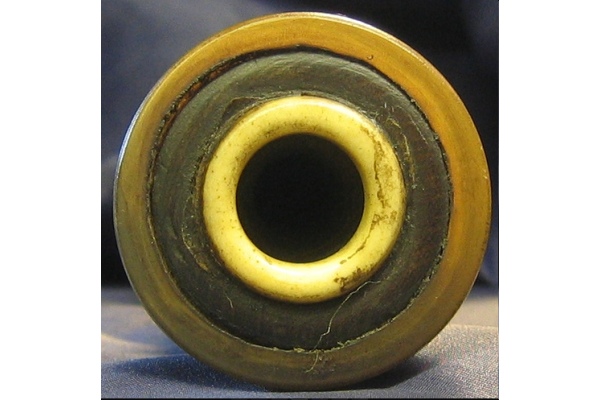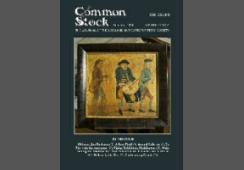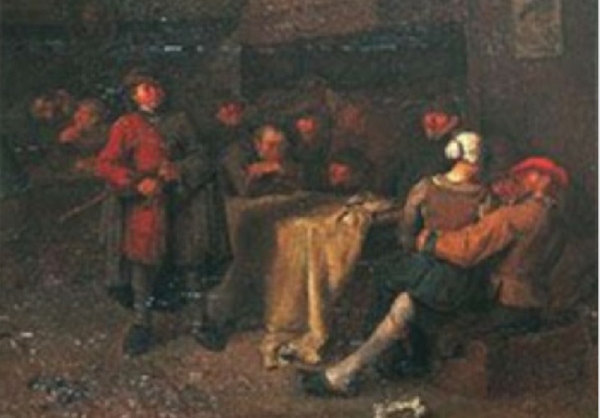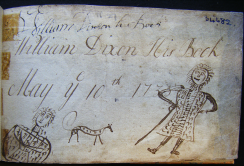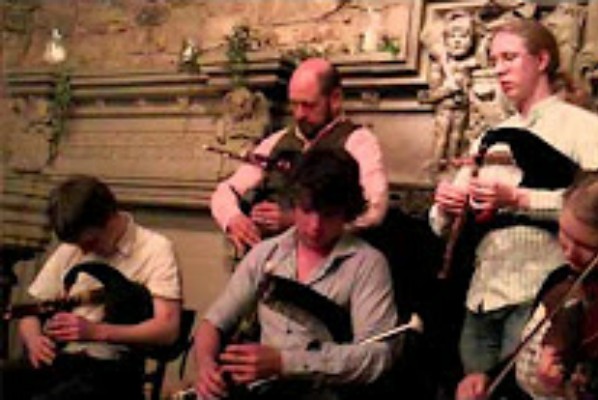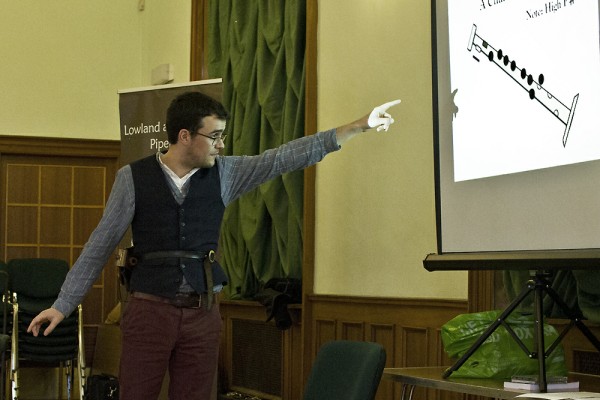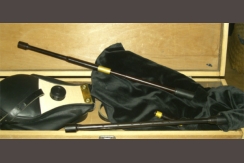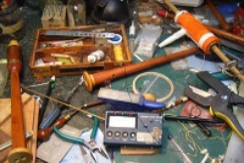

Jim Rockwell writes from Aldgate, South Australia about a set of cauld-wind pipes he found illustrated in an old book.
I found the article by Hugh Cheape (in the last issue of Common Stock ) so interesting that I have enclosed a copy of a picture of a set of pipes that I found in an old book in our state library. I have made a set of pipes from this, but at the moment I am stuck on the chanter. Is it a tapered bore or a cylindrical one, and what are its internal dimensions? Probably I will find them somewhere.
According to the heading at the top of the illustration, the book concerned Is called ‘Leabhar Comunn nam Mor Ghael' ~ Book of the Club of True Highlanders. Sounds suspiciously like a product of Victorian tartanry. Can anyone tell us more? - Ed.
Pipe-maker Julian Goodacre gives his thoughts on the drawing...
THIS picture actually shows two sets of Scottish bellows pipes. Pipe A has a conical chanter—this I assume because of its scale and also because of the fact that it has double vent holes clearly shown near the bottom of the chanter, a feature of conical chan ters. Pipe B appears to be a set of Scottish small pipes. the thumb hole on the chanter is not easy to see as it is drawn over the bag. There are seven finger holes drawn - the bottom one is shown at the side and it would be easy to assume that this is a mistake made by the artist. The spacing of the finger holes indicates that the top and bottom leading notes are sharp, unlike the Highland pipe scale where these notes are flat.
I assume that the chanter is open-ended - The style of the pipes appears typically Scottish with combing and a common stock rather large by today’s standards. The style of turning on Pipe A is very different. Both pipes appear to have the “Highland” drone arrangement of one bass and two tenor drones.
Using the scale provided, Pipe A is approximately 14in long, which is only 1/4in longer than the chanter illustrated on Page 11 of Common Stock Vol 3, No 2. The chanter on pipe B is about 8 1/2 in long - approximately 1/2in shorter than the small pipe chanter illustrated on Page 9 of this issue. Incidentally, I find this fully-frontal method of drawing bellows pipes very logical as this is the position in which one views pipes when someone is playing them.
THE STUBBORN PUMPER: Jim Morrison of Shepherd, Montana, USA, submits this 9/8 jig with the following story... "This was written to commemorate PM Eric Kean’s introduction to the cauld wind pipes. Eric, of Medicine Hat, Alberta, is nothing if not stubborn and at his first exposure to the small pipes he pumped steadily and without a pause for upwards of 20 minutes, emitting the most appalling series of squawks, etc, until he finally got the hang of it, then proceeded to play quite a nice tune."

